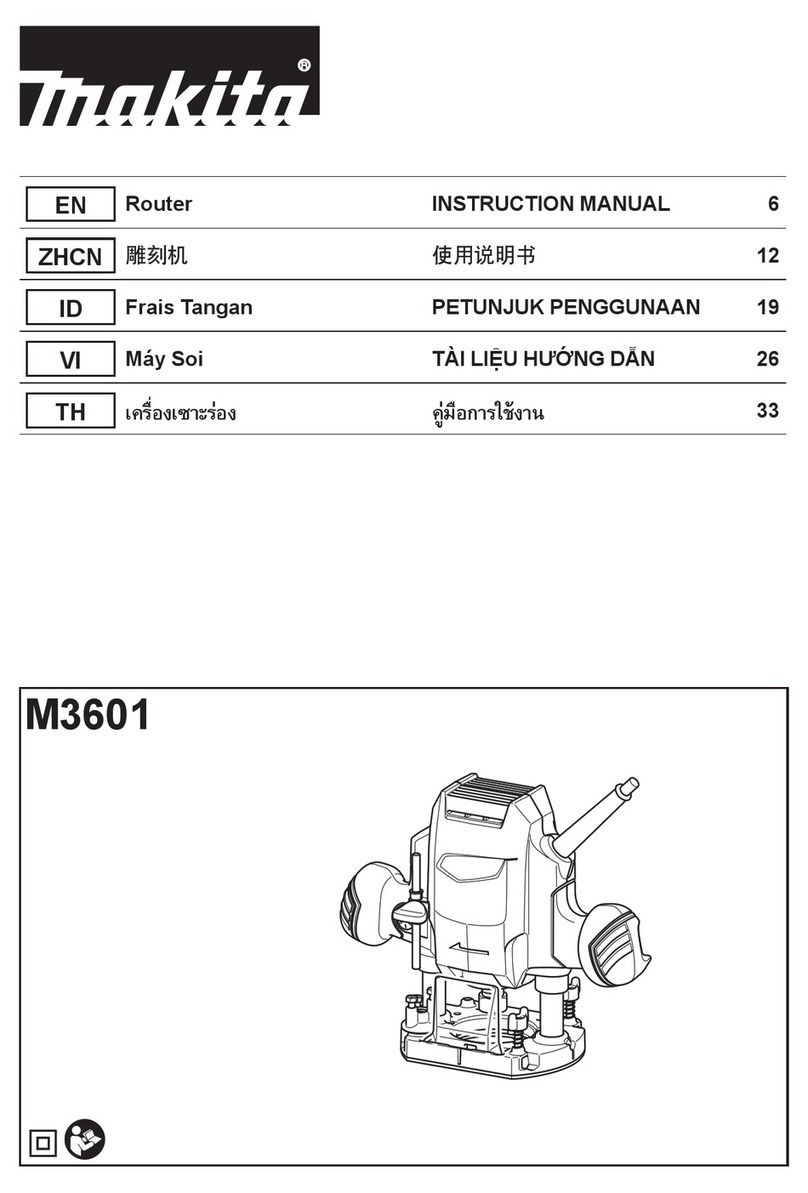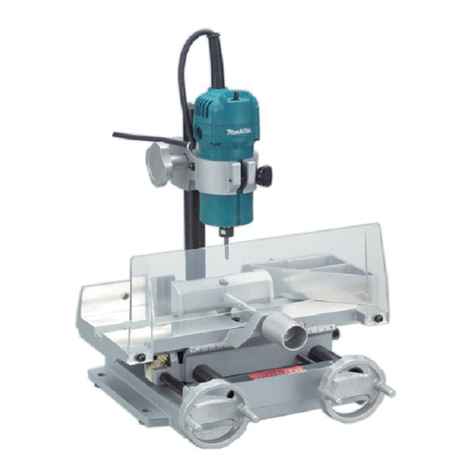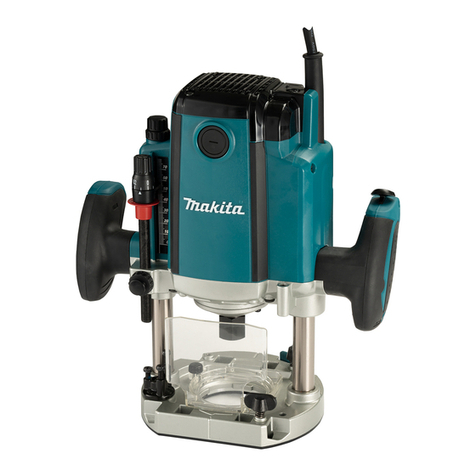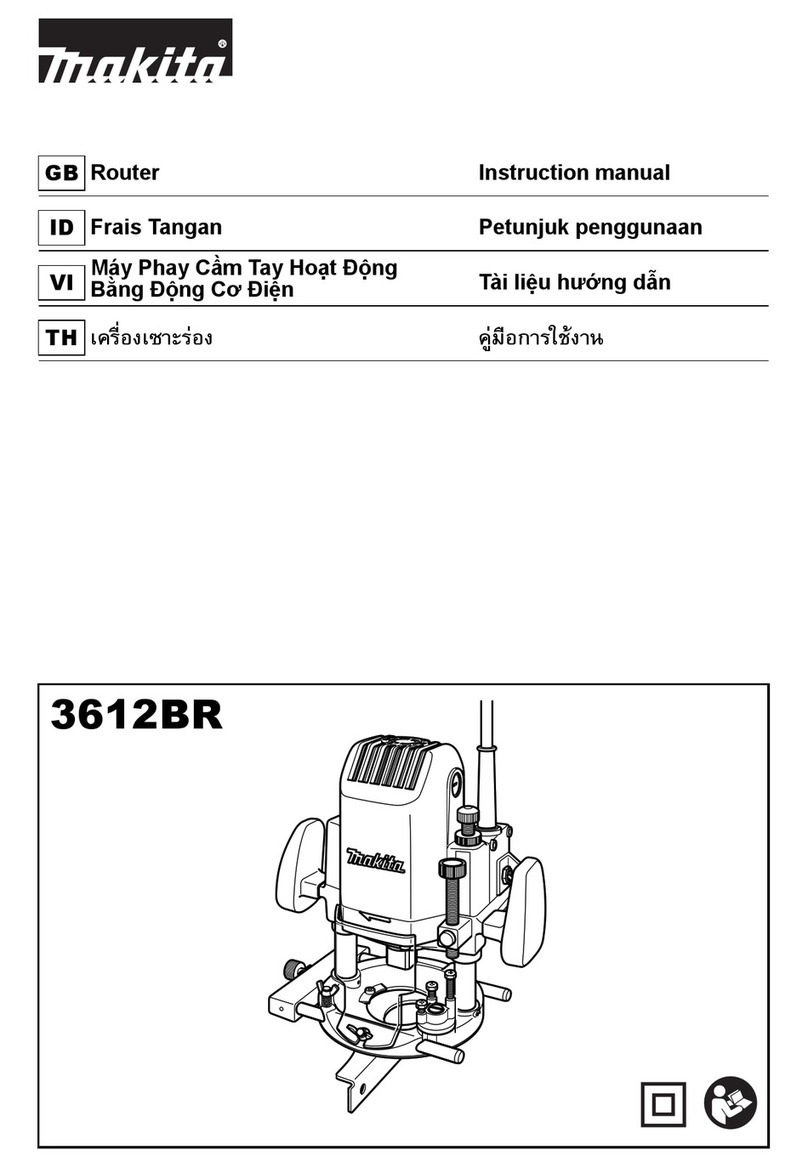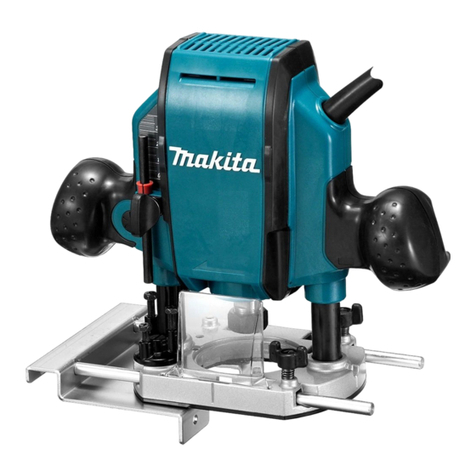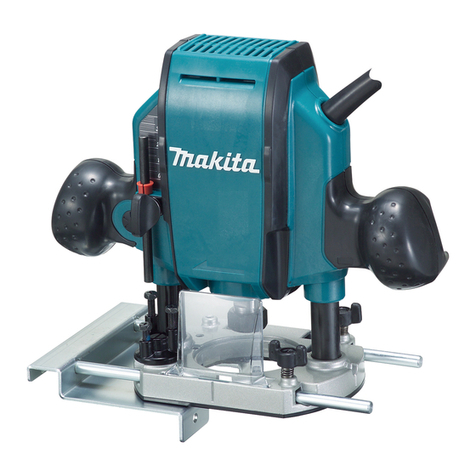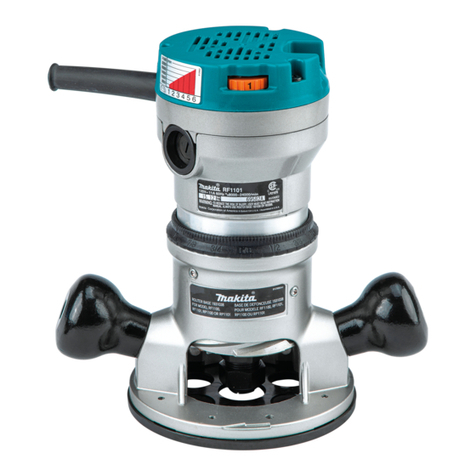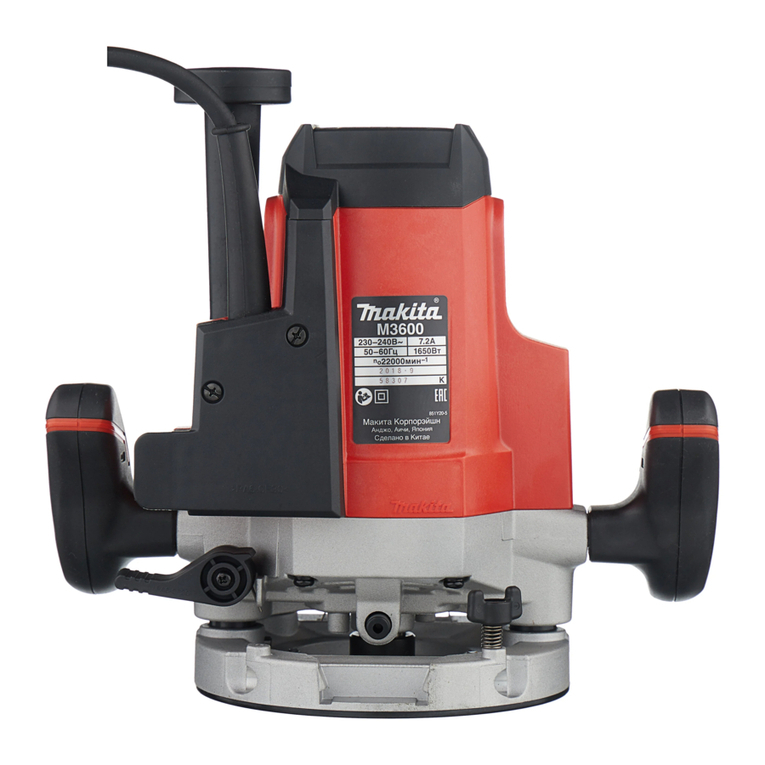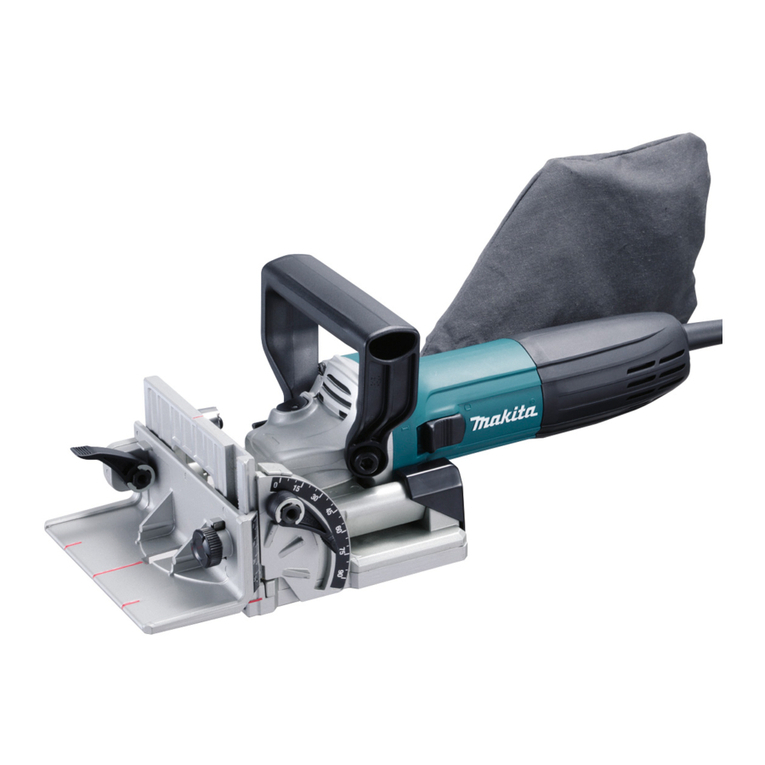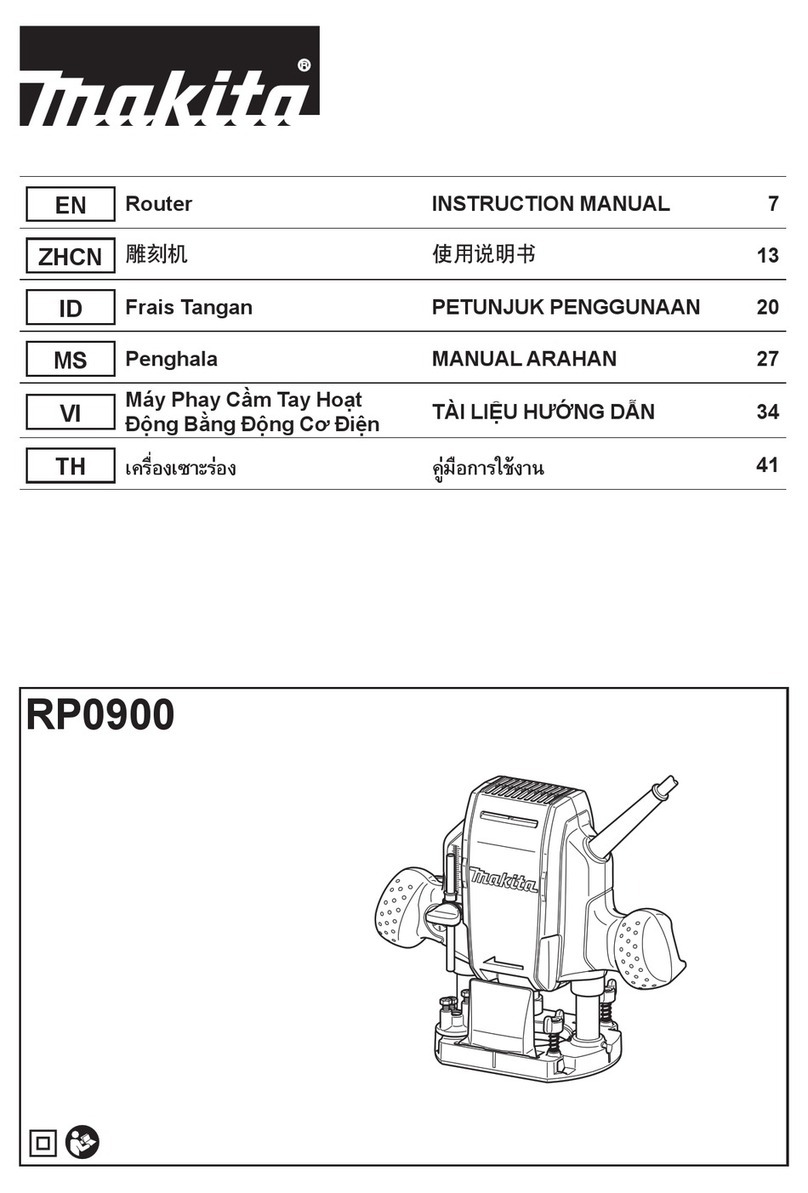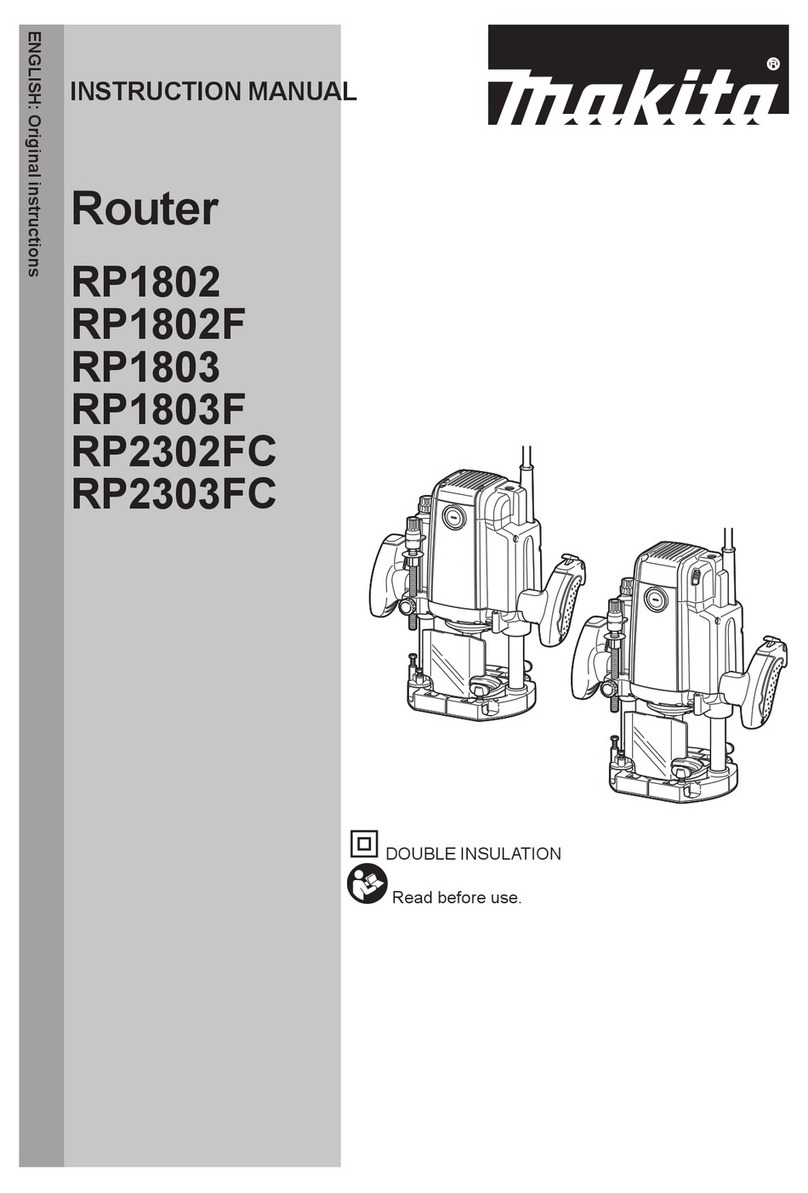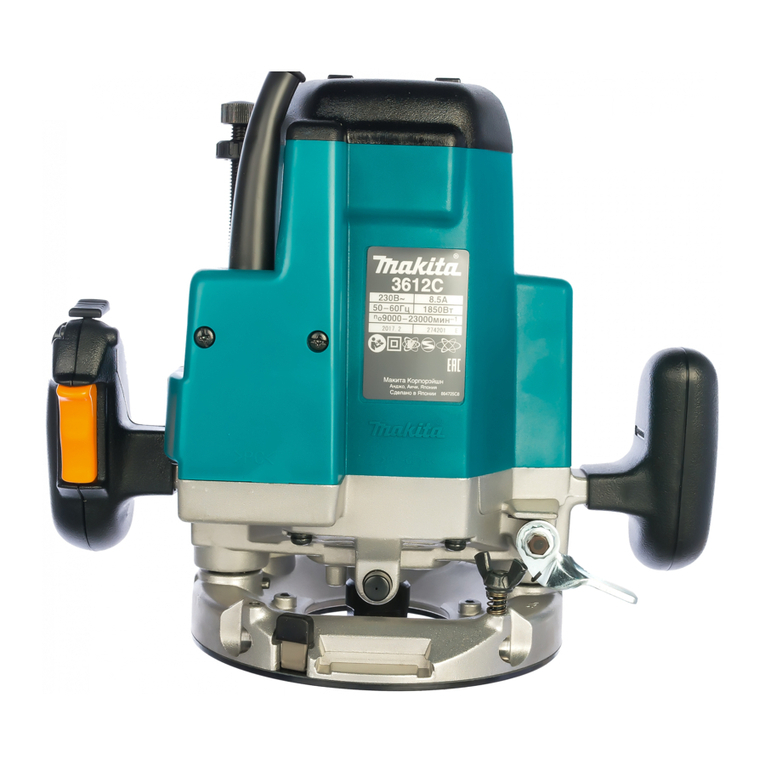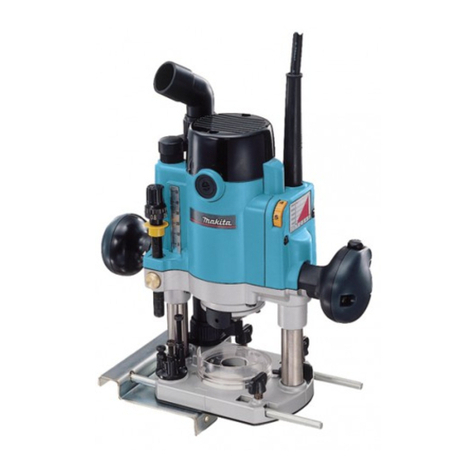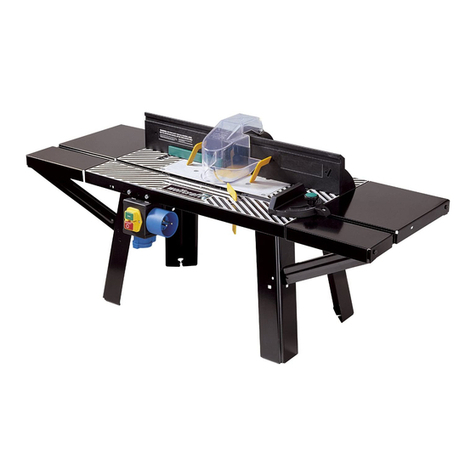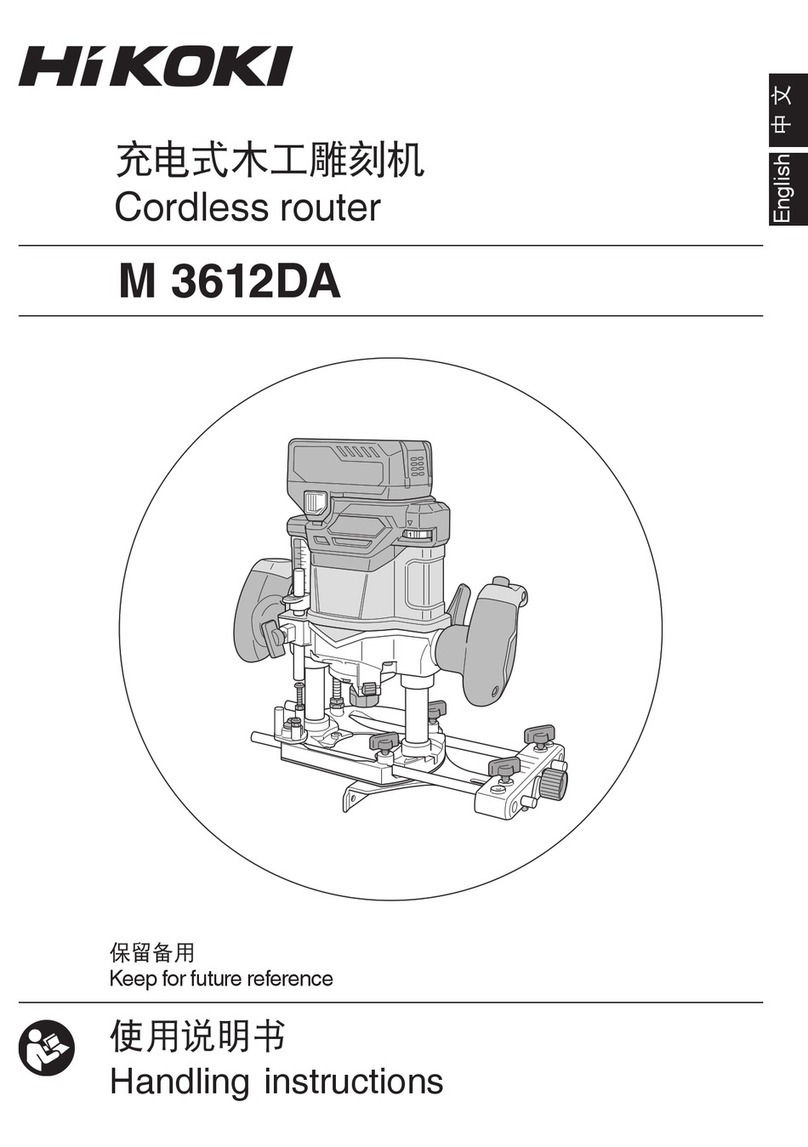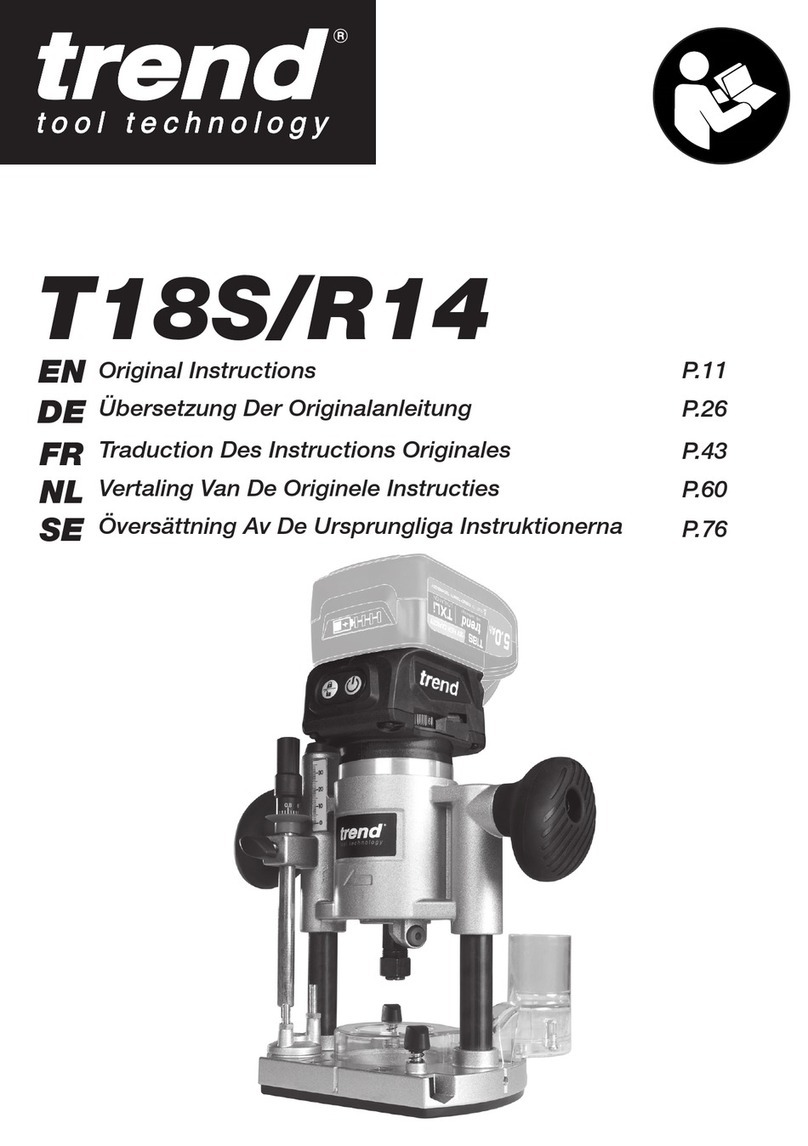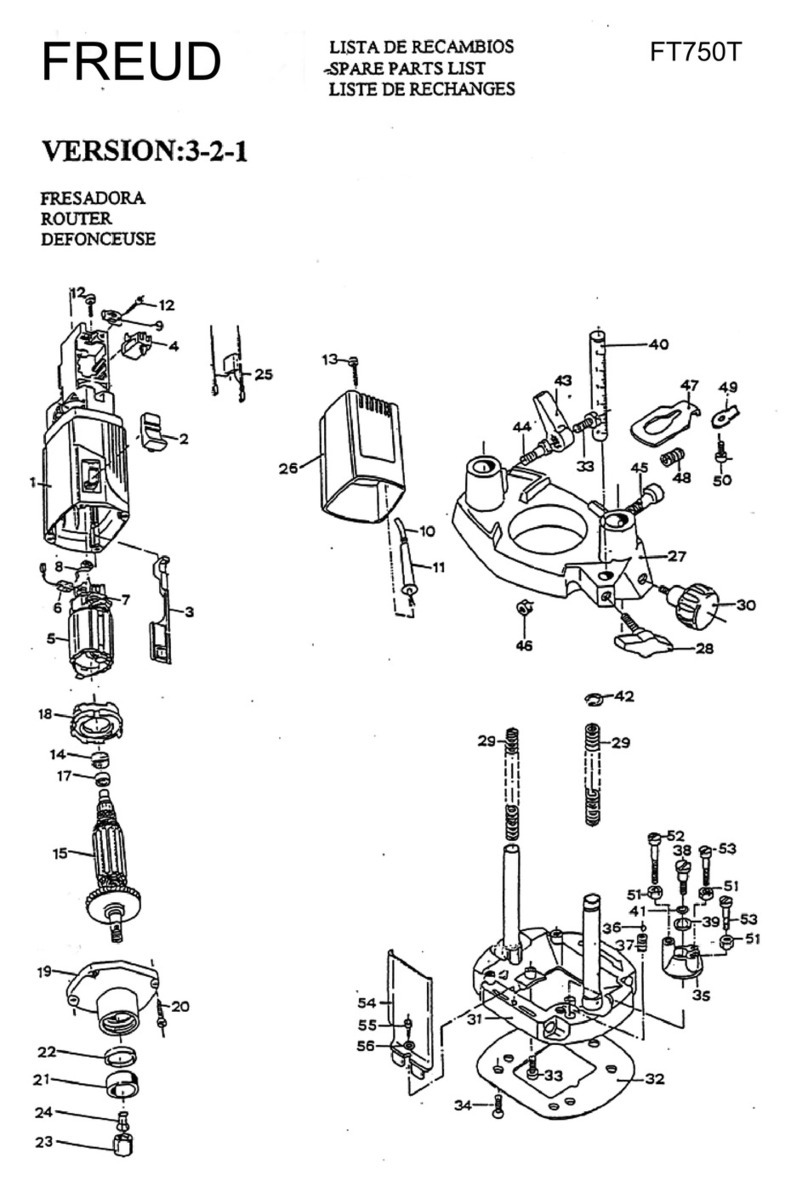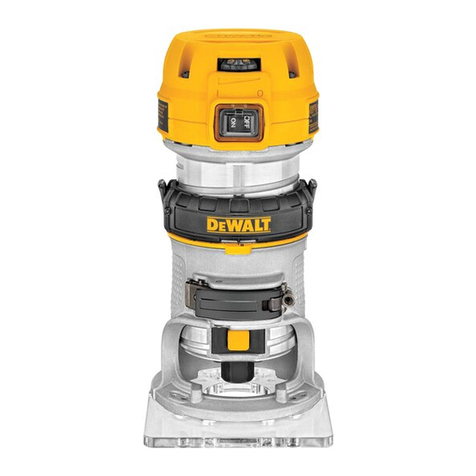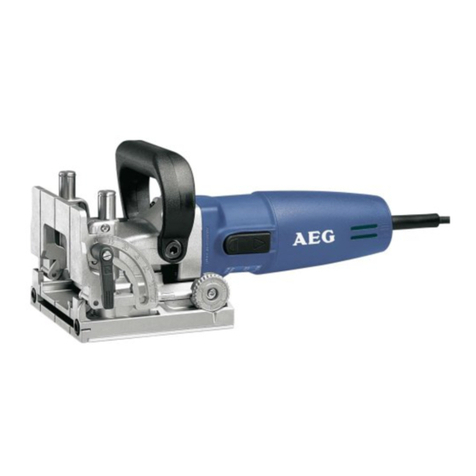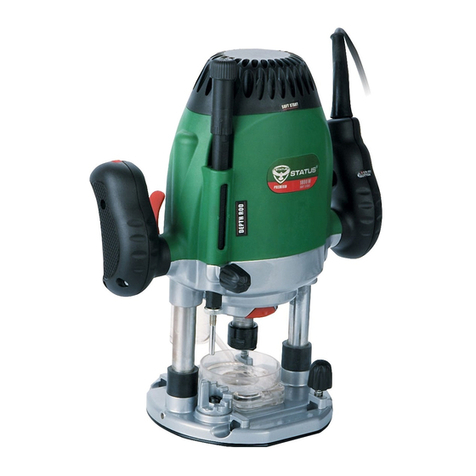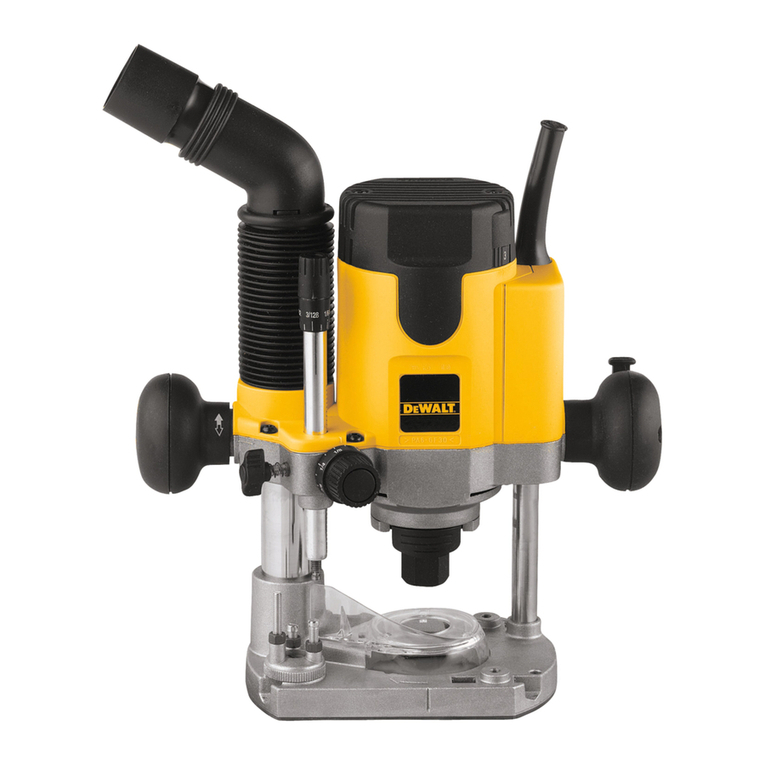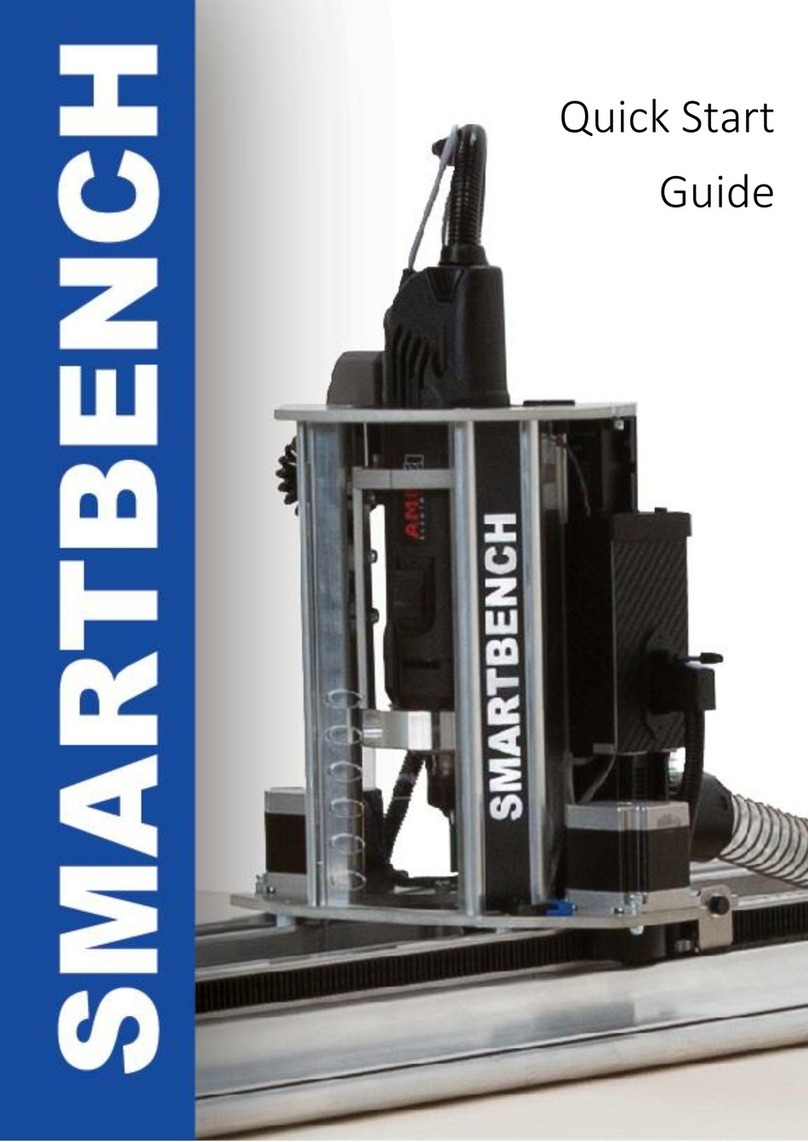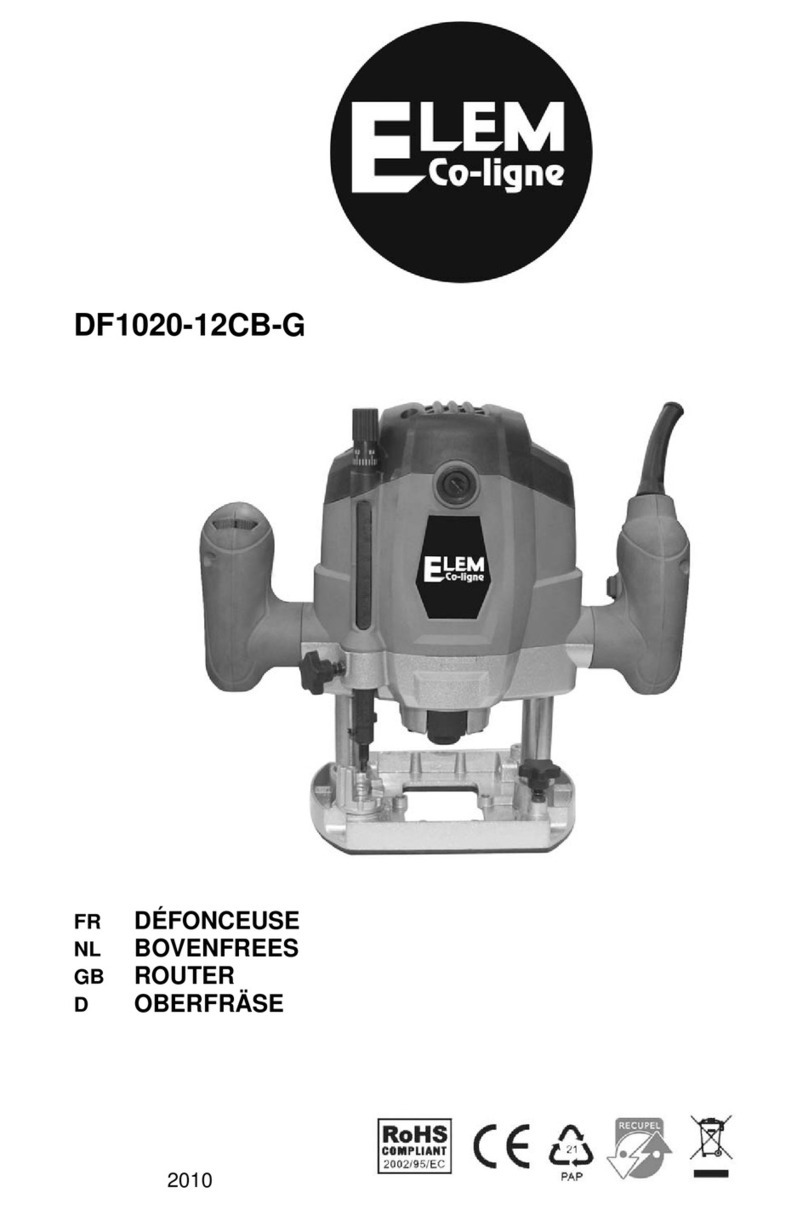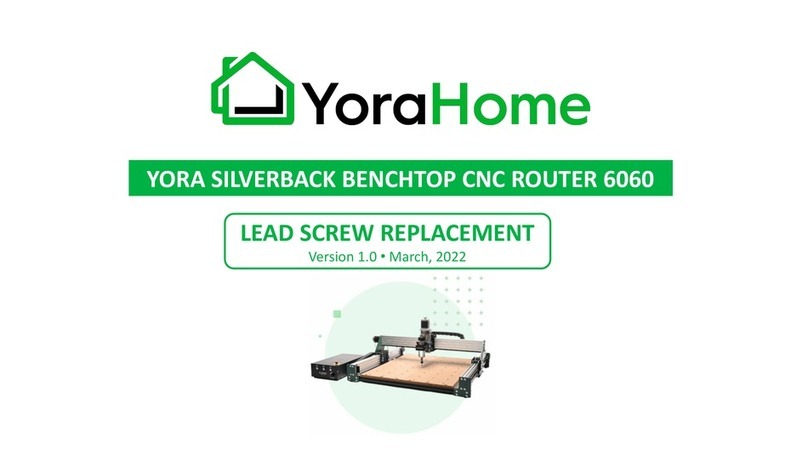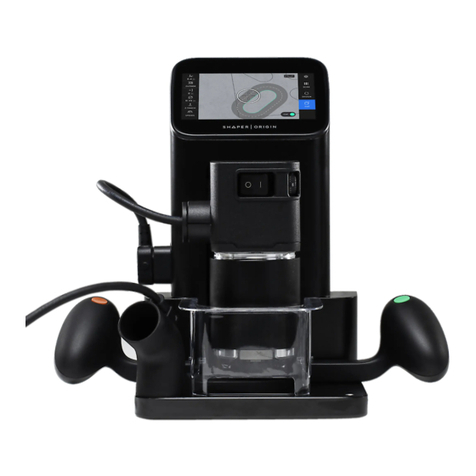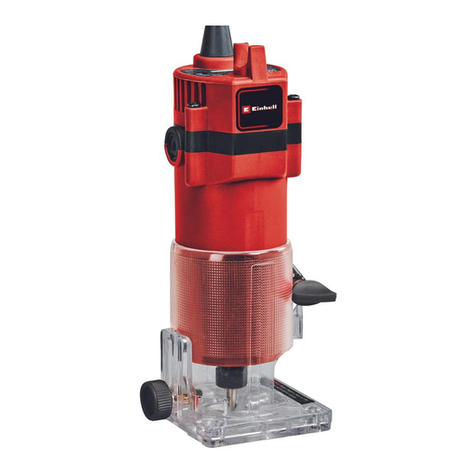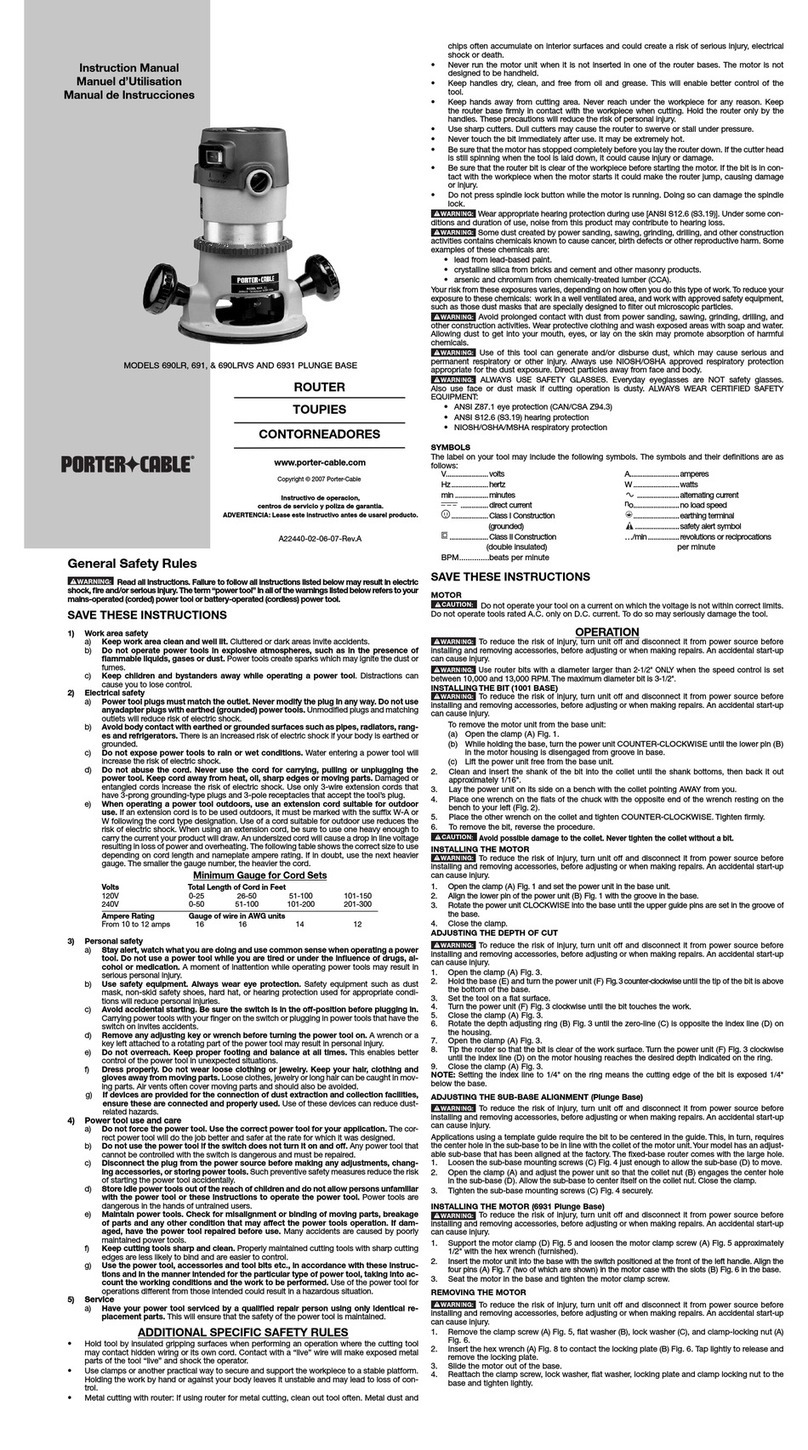
9
FUNCTIONAL DESCRIPTION
CAUTION:
• Always be sure that the tool is switched off and
unplugged before adjusting or checking function
on the tool.
Adjusting the depth of cut
Fig.1
Place the tool on a flat surface. Loosen the lock lever
and lower the tool body until the bit just touches the flat
surface. Tighten the lock lever to lock the tool body.
Turn the stopper pole setting nut counterclockwise.
Lower the stopper pole until it makes contact with the
adjusting bolt. Align the depth pointer with the "0"
graduation. The depth of cut is indicated on the scale by
the depth pointer.
While pressing the fast-feed button, raise the stopper
pole until the desired depth of cut is obtained. Minute
depth adjustments can be obtained by turning the
adjusting knob (1 mm per turn).
By turning the stopper pole setting nut clockwise, you
can fasten the stopper pole firmly.
Now, your predetermined depth of cut can be obtained
by loosening the lock lever and then lowering the tool
body until the stopper pole makes contact with the
adjusting hex bolt of the stopper block.
Nylon nut
Fig.2
The upper limit of the tool body can be adjusted by
turning the nylon nut.
CAUTION:
• Do not lower the nylon nut too low. The bit will
protrude dangerously.
Stopper block
Fig.3
The stopper block has three adjusting hex bolts which
raise or lower 0.8 mm per turn. You can easily obtain
three different depths of cut using these adjusting hex
bolts without readjusting the stopper pole.
Adjust the lowest hex bolt to obtain the deepest depth of
cut, following the method of "Adjusting depth of cut".
Adjust the two remaining hex bolts to obtain shallower
depths of cut. The differences in height of these hex
bolts are equal to the differences in depths of cut.
To adjust the hex bolts, turn the hex bolts with a
screwdriver or wrench. The stopper block is also
convenient for making three passes with progressively
deeper bit settings when cutting deep grooves.
CAUTION:
• Since excessive cutting may cause overload of the
motor or difficulty in controlling the tool, the depth
of cut should not be more than 15 mm at a pass
when cutting grooves with an 8 mm diameter bit.
• When cutting grooves with a 20 mm diameter bit,
the depth of cut should not be more than 5 mm at
a pass.
• For extra-deep grooving operations, make two or
three passes with progressively deeper bit settings.
Switch action
Fig.4
CAUTION:
• Before plugging in the tool, always check to see
that the switch trigger actuates properly and
returns to the "OFF" position when released.
• Make sure that the shaft lock is released before
the switch is turned on.
To prevent the switch trigger from being accidentally
pulled, a lock button is provided.
To start the tool, depress the lock button and pull the
switch trigger. Release the switch trigger to stop.
For continuous operation, pull the switch trigger and
then depress the lock button further. To stop the tool,
pull the switch trigger so that the lock button returns
automatically. Then release the switch trigger.
After releasing the switch trigger, the lock-off function
works to prevent the switch trigger from being pulled.
CAUTION:
• Hold the tool firmly when turning off the tool, to
overcome the reaction.
Electronic function
For model RP2300FC,RP2301FC only
Constant speed control
• Possible to get fine finish, because the rotating
speed is kept constantly even under the loaded
condition.
• Additionally, when the load on the tool exceeds
admissible levels, power to the motor is reduced to
protect the motor from overheating. When the load
returns to admissible levels, the tool will operate
as normal.
Soft start feature
• Soft start because of suppressed starting shock.
Speed adjusting dial
For model RP2300FC,RP2301FC only
Fig.5
The tool speed can be changed by turning the speed
adjusting dial to a given number setting from 1 to 6.
Higher speed is obtained when the dial is turned in the
direction of number 6. And lower speed is obtained
when it is turned in the direction of number 1.
This allows the ideal speed to be selected for optimum
material processing, i.e. the speed can be correctly
adjusted to suit the material and bit diameter.
Refer to the table for the relationship between the
number settings on the dial and the approximate tool
speed.
